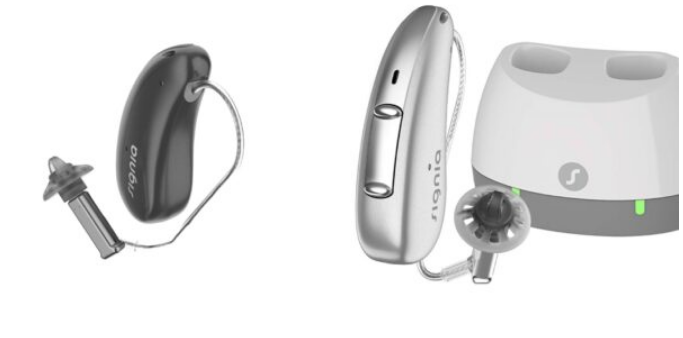Improving Hearing Health: Exploring the World of Hearing Aids

Hearing loss is a common condition that affects people of all ages. As we get older, age-related hearing loss becomes increasingly prevalent. However, hearing issues can develop at any age due to genetics, excessive noise exposure, illnesses, injuries, and certain medications. Regardless of the cause, untreated hearing loss can negatively impact your quality of life. Fortunately, there are solutions available to improve hearing health. One of the most effective options is hearing aids.
Understanding Hearing Loss
Hearing loss refers to any degree of decreased ability to hear sounds. It can range from mild to profound. There are two main categories of hearing loss:
Sensorineural Hearing Loss
This hearing loss results from damage to the inner ear (cochlea) or auditory nerve. It is often caused by aging, noise exposure, genetics, infections, injuries, tumours, or toxic medications. Sensorineural hearing loss affects the ability to hear faint sounds and understand speech clearly. It is generally permanent.
Conductive Hearing Loss
This refers to hearing loss caused by outer or middle ear issues that prevent sound from reaching the inner ear. It can result from an earwax buildup, fluid in the middle ear, ear infections, perforated eardrums, benign tumours, or congenital malformations. Conductive hearing loss often causes a reduction in loudness. It may be temporary or permanent, depending on the underlying cause.
Signs of Hearing Loss
Some common symptoms that indicate hearing loss include:
- Difficulty hearing conversations, especially in noisy environments
- Frequently needing others to repeat themselves
- Turning up the volume on electronic devices
- Having to focus intently to understand speech
- Missing certain sounds, like high pitches
- Trouble differentiating lessons when there are multiple talkers
- Ringing or buzzing in the ears (tinnitus)
- Feeling like others are mumbling
If you experience persistent hearing difficulties, seeing a hearing healthcare professional for an evaluation is essential. They can diagnose the type and extent of hearing loss through comprehensive testing.
Benefits of Hearing Aids
For many individuals with hearing loss, hearing aids offer life-changing improvements in hearing ability and quality of life. Here are some of the top benefits of using hearing aids:
Improved Hearing Clarity
Hearing aids amplify and process sounds to make them clearer and easier to distinguish. This can restore the ability to hear a full range of tones and frequencies. Hearing aids provide personalised sound amplification based on your specific hearing loss.
Better Speech Understanding
By making speech louder and more defined, hearing aids enhance your ability to comprehend conversation. Advanced hearing aid technology can isolate and amplify the primary speech signal to improve understanding. Directional microphones also help filter out background noise.
Reduced Listening Effort
Hearing loss often requires significant effort and concentration to follow conversations. Hearing aids reduce the strain of listening by delivering amplified sound directly into your ear. This allows you to listen more efficiently and focus less on trying to hear.
Improved Social Interaction
Hearing speech and other sounds more clearly makes conversing, connecting, and participating in activities easier. Hearing aids can reduce social isolation and improve communication ability.
Overall Better Health
Enhanced hearing can significantly improve mental, emotional, and physical health. By restoring your ability to engage with your environment fully, hearing aids can reduce frustration, anxiety, depression and cognitive decline.
Hearing Aid Styles and Features
There are many types of hearing aids available today, ranging from basic to advanced. Hearing healthcare professionals will recommend options tailored to your lifestyle, budget, and degree of hearing loss. Here are some key styles and features:
Behind-the-Ear (BTE)
This style hooks over the top of your ear and rests behind it. The earmold fits into your ear canal. BTE offers power and flexibility for all types of hearing loss.
In-the-Ear (ITE)
ITE devices fit entirely inside your outer ear. They are customised for comfort and an inconspicuous appearance. Different sizes accommodate mild to severe hearing loss.
In-the-Canal (ITC)
Deeper and smaller than ITE models, ITC hearing aids fit partly inside your ear canal for subtlety. They can accommodate mild to moderately severe hearing loss.
Completely-in-Canal (CIC)
Nearly invisible, CIC hearing aids are customised to sit entirely within your ear canal. Their small size allows them to amplify mild to moderate hearing loss.
Bluetooth Connectivity
Many hearing aids today offer direct streaming from Bluetooth-enabled devices like smartphones and tablets. This allows for hands-free phone calls and streaming music or videos.
Rechargeable Batteries
Rechargeable hearing aid batteries allow you to conveniently power up your devices overnight to be ready for full-day use. This eliminates the need to change tiny batteries frequently.
Telecoils
Telecoils pick up electromagnetic signals from compatible telephones or looped rooms. This lets you hear phone calls or public announcements directly through your hearing aids.
Apps and Remote Controls
Apps let you control and customise your hearing aids through your smartphone or tablet. Remote controls allow easy adjustments to volume, programs, and other settings.
Waterproof Styles
Waterproof hearing aids allow you to wear them without concern during exercises, in the rain, or at the pool or beach. This enables hearing accessibility in more settings.
The Hearing Aid Fitting Process
To access hearing aids, you must work with a licensed hearing healthcare provider. They will guide you through the customised fitting and programming process. Here is an overview of what to expect:
- Comprehensive hearing evaluation – You’ll undergo a thorough assessment to determine the exact type and extent of hearing loss. This also identifies any underlying medical conditions.
- Hearing aid selection – Your provider will recommend appropriate models and styles based on your evaluation results, lifestyle, and preferences. You’ll select options together.
- Ear impressions – Molds will be taken of your ear canals to create customised earmolds and fittings for your devices.
- Initial programming – Your provider will program and adjust the hearing aids to amplify the frequencies you have difficulty hearing. Real-ear measurements fine-tune the fit.
- Trial use – You’ll test the hearing aids in your daily environments to assess usability, comfort, and speech clarity. Follow-up adjustments can be made.
- Treatment plan – Your provider maps out a treatment plan covering hearing aid use, communication strategies, and ongoing care. You’ll schedule follow-up visits.
- Education – Ask your provider to educate you about getting accustomed to wearing, cleaning, and caring for your hearing aids. Maintenance is important.
With professional guidance, hearing aids can significantly improve hearing ability and positively impact everyday communication and life. Consult with a hearing specialist to get started. Consistent use of properly fitted hearing aids by Audi Hearing can help you successfully manage hearing loss.
